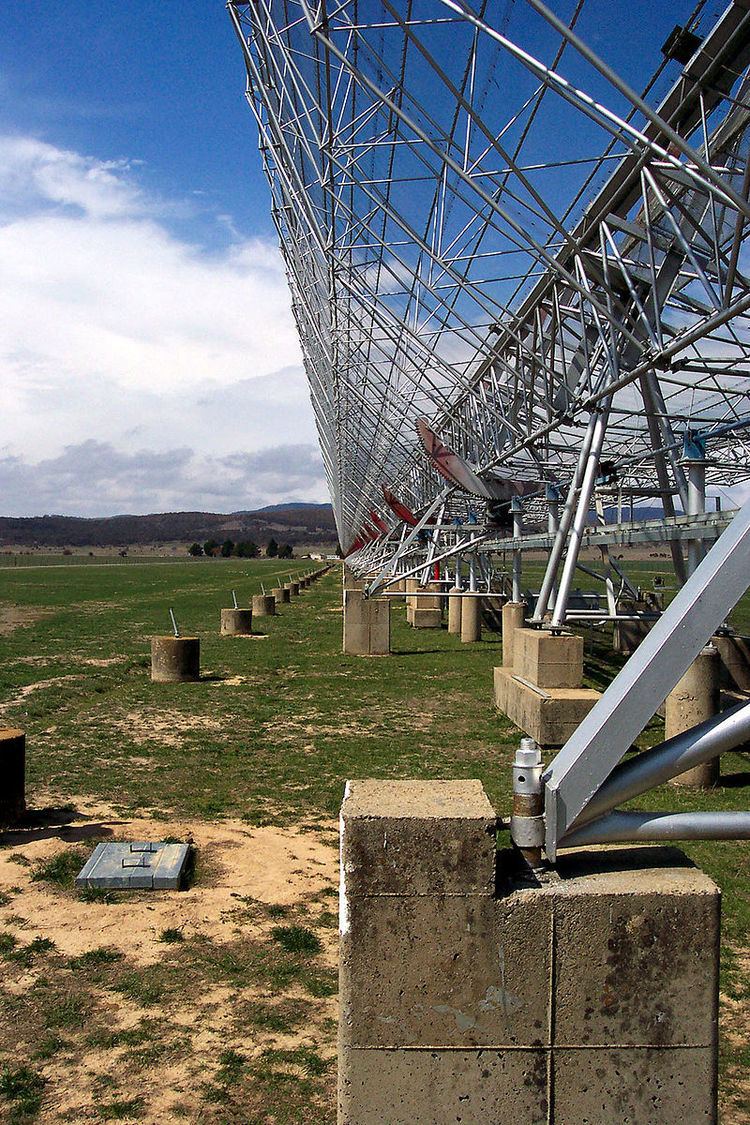Phone +61 2 9351 2537 | ||
 | ||
Address Hoskinstown NSW 2621, Australia Similar ANU Colleges of Science, University of Canberra, Queanbe Regional Council, Mount Stromlo Observat, CSIRO ‑ Tidbinbilla ‑ Canberr | ||
The molonglo observatory synthesis telescope most
The Molonglo Observatory Synthesis Telescope (MOST) is a radio telescope operating at 843 MHz. It is operated by the School of Physics of the University of Sydney. The telescope is located near the Molonglo River near Canberra, Australian Capital Territory, and was constructed by modification of the East-West arm of the former Molonglo Cross Telescope, a larger version of the Mills Cross Telescope.
Contents
- The molonglo observatory synthesis telescope most
- Design
- Grote Reber
- MOST work
- Square Kilometre Array development
- References
Design
The MOST consists of two cylindrical paraboloids, 778m x 12m, separated by 15m and aligned East-West. A line feed system of 7744 circular dipoles collects the signal and feeds 176 preamplifiers and 88 IF amplifiers.
The telescope is steered by mechanical rotation of the cylindrical paraboloids about their long axis, and by phasing the feed elements along the arms. The resulting `alt-alt' system can follow a field for ± 6 hours (necessary for a complete aperture synthesis with an East-West array) only if the field is south of declination -30 degrees. For fields near this limit the signal-to-noise ratio is lower for the first and last hour or so due to the lower gain of the system at large 'meridian arc distance' angles.
The Molonglo Cross Telescope was a 408 MHz radio telescope built by Bernard Y. Mills and collaborators and operated by the University of Sydney.
Grote Reber
The design of the original system owes much to pioneering radio astronomy by Grote Reber in the USA and Australia, that informed Mills' work. A memorial to Reber, including some of his ashes, is sited at the telescope.
MOST work
Much pioneering radio astronomy was done with this telescope. The Molonogo Cross Telescope was used for a survey of the Southern sky with a resolution of 2.8 arc-min.
The telescope's main research project was the Sydney University Molonglo Sky Survey (SUMSS), a sensitive radio imaging survey of the southern sky at 843 MHz with similar resolution and sensitivity to the northern NRAO VLA Sky Survey (NVSS). SUMSS is now complete, and digital images and a source catalogue are available online.
After a five-year break in which obsolete analog equipment was updated the observatory will now be used to detect fast radio bursts and do research on pulsars.
Square Kilometre Array development
MOST is being used to develop technology for the Australian site of the Square Kilometre Array telescope. Since 2003 work has proceeded on the SKA Molonglo Prototype (SKAMP) which has included fitting new wide-band feeds, low-noise amplifiers, digital filterbanks and correlator, in order to demonstrate 300-1420 MHz continuous frequency coverage and multibeam mode operation.
The new correlator is a 96 input continuum correlator using Field Programmable Gate Array (FPGA) chips.
This effort is a collaboration between the Australia Telescope National Facility (ATNF), the Australian Commonwealth Scientific and Industrial Research Organisation (CSIRO) Information and Communications Technology Centre, and the University of Sydney.
